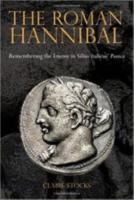
Liverpool University Press (2014) h/b 276pp £71.87 (ISBN 9781781380284)
Much has been done in the past half-century, says S., to rehabilitate Silius, and indeed a hero called Spaltenstein has published a Commentary (in three volumes) on the entire opus—17 Books, 12,000 lines, the longest poem in Latin: even the Dindorfs must have raised a ghostly cheer. As the title implies, S.’s work, which started as a PhD thesis at Cambridge, is ‘about Hannibal as he exists in Rome’s literature, the foreign foe in recognisable form: this is the Hannibal that Rome built’. The eleven chapters include ‘Before Silius: the Creation of the Roman Hannibal’ (including Polybius, Cicero, and Cornelius Nepos); ‘Silius’ Influences’ (Livy comes into his own); ‘Epic Models’ (Ennius, dealt with necessarily in cursory fashion, Homer, and—obviously—Virgil), ‘Hannibal’s decline after Cannae’, including ‘Succumbing to luxury’, ‘The “Lightning Bolts” of War’ (enter Scipio), and ‘The Man and his Myth’ (including ‘Choosing Hercules as a role model’).
In sharp contradistinction to Lucan, Silius introduces mythical characters from Homer and Virgil, and S. points out that any reading of Hannibal as Achilles is also one of him as an Aeneas or Turnus in the guise of another Achilles; he is also likened to Hector, and even to Tydeus and Parthenopaeus. To what extent this is artificial, i.e. is Hannibal being made by the poet to resemble these heroes of past epics? S. provides us with the evidence in generous measure, with ample citations, in Latin, and occasional Greek, all fully translated—the text is that of J. Delz for Teubner; S. appears to have made no use of J.D. Duff’s translation for the Loeb Library.
An Index Locorum of no fewer than 25 columns for Silius alone sufficiently attests to the dedicated work which has gone into this book. S.’s intention, which has been admirably fulfilled, was to guide the reader through a systematic consideration of the Roman Hannibal—as mediated, of course, not only in the familiar prose of the historians but via the epic vision of Silius. Not everyone will feel that the mixture of mythological figures with those of historical fact makes for satisfactory poetry, and the reputation of Silius has long been that summed up by Pliny (scribebat carmina maiore cura quam ingenio), but that is in no way to diminish S.’s scholarly achievement. It is a pity that the book’s formidable cost will of necessity limit its market.
Colin Leach
